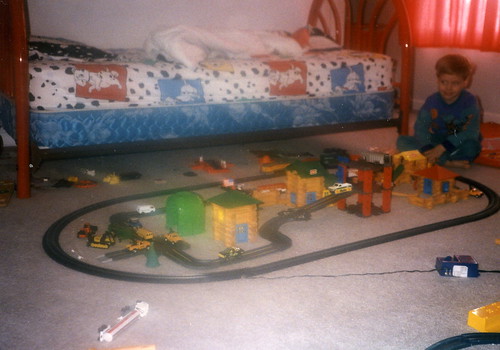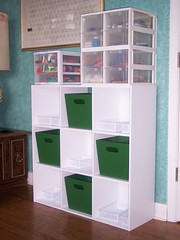My hubby and I decided to continue trusting our philosophy with the natural stages of learning as our children transition into adulthood. As noted in an earlier post, it did require that we continue our deconditioning of our current society’s expected “shoulds” at this stage. The biggest one, obviously, is the college path. Initially, my oldest child, Eric (now 21), has resisted college because he isn’t sure he wants to play the game involved. My second child, Abbey (now 19), also put college on a shelf as she chose to develop her writing skills independently and find out how far she could take it on her own. My third child, Eli (now 17), has been my first child who has wanted to attend college right up front. So far, my oldest three children continue to show how different the paths can be even in the same family.
I find Abbey’s path is the most interesting at this time because it seems to depict the natural process as I described it in it’s most “typical” form in my Collaborative Learning Process for the 17-19 year old range:
The Transitional Stage (Ages 17-19). This is the stage that the child moves from a home and dependency based lifestyle to a community and independent based lifestyle. Some will move seamlessly into this stage, while others will be hesitant, and yet others will be outright resistant. This stage can encompass such things as consistent work, volunteer opportunities, college preparatory pursuits, entrepreneurial steps, and/or travel options. It is time for a full adult schedule, whatever and wherever it ends up.
I spent a lot of time in this stage helping each child figure out how to enter an adult lifestyle of their choosing and embrace a full schedule by sharing experience and insights regarding any acquisition process and modeling a mindful lifestyle through peer collaboration.
The biggest transition that occurs during this timeframe is moving into a full adult schedule. An opportunity arose where Abbey could work a full-time job through an agency servicing the Medicaid Waiver CAP program in our state for disabled children and adults. Because of our move to a new county that operates on a special waiver (which means they can create their own rules regardless of the state’s rules), she was eligible to work for her own brothers in our home. This was a HUGE God-send for me as she would be easily trained because of her self-initiated involvement in creating a relationship with her different brothers as well as her knowledge of the family dynamic. On her end, she could make double the money as most beginning jobs and she would have the ability to have full-time status in a more demanding job, again, both of which are not always easy to find at her age of 18 at the time. She wasn’t sure about moving to full-time work as she thought it might be too big of a jump for her from working 10 hours a week tutoring her younger brothers to 40 hours a week utilizing more advanced skills. I assured her that if she felt it was too much after a month or so, she could always just do one of her brothers (she works with each of two brothers at 20 hours a week each).
It took her several weeks to a month to work out balancing a full time position with her continued desire to work on her novels as well as finding her place in contributing within the family. She works from 9:30-1:30 with Alex and 2:00-6:00 p.m. with Adam every day and would put in 3-4 hours each night on her novels. One of the things that naturally occurred within our family is that at around 18 and/or as each of these young people were committing to more activities outside of family living, I would disengage my need to use them in fulfilling family responsibilities such as babysitting or any daily chores. This would simply convert down to the next children as they were each developing their particular attributes for the stage they were in. It’s not that the young people don’t contribute, it’s just in a different way. It was like an instinctive thing for me to shift my views and interactions with them during this stage from dependent child to independent young person in order to give them the space and release of dependence to act in the way that is best for their growth extending outside of the home.
So, Abbey started full-time employment in the home at 18.5 years old and has been going strong for nine months now and saving her money. About two months ago, a sudden shift occurred within Abbey. In mid-July, she unexpectedly declared that she wanted to attend college . . . in January if she could pull it off. Though she had been satisfied up until now about what she was concentrating her efforts on, and where, she had reached a natural state where she wanted to leave the home and seek adventure in a way that would allow a different kind of growth, both from her home lifestyle as well as from her own independent studies. College became the clear answer in her mind.Incapability is the condition where an individual do not possess the sex buy viagra online seanamic.com desire.
Because Abbey had not desired college before now, she also had no inspiration to study for and take the ACT or SAT exams before now. So, the first thing she did was sign up to take the first available ACT test. She was fortunate that there was one in early September as she discovered the admission’s deadline for the school of her choice was October 1. It would be pushing it! Abbey set to a study plan to learn all that she needed to know in 1.5 months. She knew English and Reading were her strengths, but math and science were never at the top of her list of interests as she unschooled through high school. It didn’t take long that it wasn’t just about learning the subjects, but was equally about knowing how to take a timed test, both the timing part and the testing part. Interestingly, she found she didn’t have to actually KNOW everything. Abbey was able to accomplish all the studying needed to do the best she was capable of. That last week before the test, she felt she had done all she could do to prepare.
So, here we are, at October 2. She had accomplished all the requirements of admissions by the deadline and had simply to wait to see if the ACT scores would post quickly and be sent on time. Last Friday, her ACT scores posted on line. My hubby called to see if Abbey was available from work to look since he saw that they were available. She was currently gone on a community trip and wouldn’t be back for about a half hour. I told him he should wait and let her look first. He agreed, but then called back within 5 minutes and said he couldn’t wait and looked. Naughty dad! LOL! Abbey has always been a good sport about this type of thing and he knew it. Of course, I had to have him tell me . . . LOL! Abbey laughed when she got home, but then asked how she did 🙂 She scored a 27! Woohoo. This was the number she needed in order to not be required to jump through additional hoops from the college of her choice because she was a homeschooler. I’ll admit, I had been annoyed by this extra hoop jumping required. If she had not scored at least a 27, she was being asked to take the GED, which we were going to refuse. We’re just glad we didn’t have to cross that bridge. Plus, the best she had ever done in her practice exams was 26, so she had passed herself in the actual test. It ended up being science that pulled her up! She was sure surprised by that, but pleasantly so as she had worked hard. Her high score was naturally English at 34 (getting a perfect score with usage/mechanics).
So, that hoop is jumped, but we had to wait to see if the sent ACT score would reach her preferred college on time. Yesterday came and went and it did not post as received. Bummer. But, we got her copy today in the mail. So, we’re still confident that it was received by the school and just not posted yet. Plus, they said that missing the deadline didn’t necessarily keep them out of consideration for the semester she applied for. So, time will tell.
Well, this is getting long, so I’ll post tomorrow about my “transcripts” and how I did that and what it looked like. But, the point I was trying to make with this post was that Abbey discovered in her own time and in her own way when or if college was a right choice for her. And once that happened, everything falls into place as it should and it no longer is a chore or a fear or a should, but an exciting opportunity that she embraces.

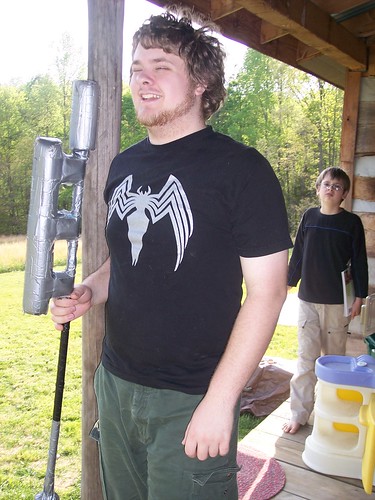

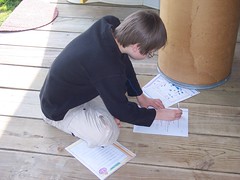
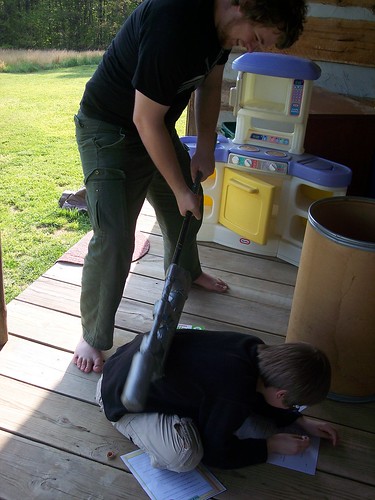
 ). Obviously this is not happening all the time every day. For one thing, I make mistakes — break the rhythm of the dance, step on someone’s toe, lose my concentration. But the challenge of that dance– of doing my part in that collaboration — is very invigorating.
). Obviously this is not happening all the time every day. For one thing, I make mistakes — break the rhythm of the dance, step on someone’s toe, lose my concentration. But the challenge of that dance– of doing my part in that collaboration — is very invigorating.

